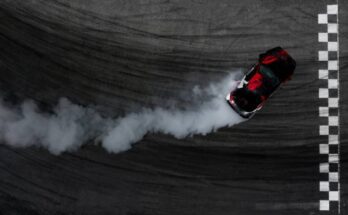Assessing the Blue Jays’ Fancy “New” Digs
“Based on the best-available public health advice, we have concluded the cross-border travel required for MLB regular season play would not adequately protect Canadians’ health and safety,” Canada’s Minister of Immigration, Refugees and Citizenship said Saturday in a statement. “As a result, Canada will not be issuing a National Interest Exemption for the MLB’s regular season at this time.”
Canada’s statement seemingly leaves open the possibility that the Blue Jays could come home for a theoretical postseason series if the environment is more favorable. But that would be a few months away, so Toronto’s next home game will be played — or at least is scheduled to be played — in upstate New York rather than the Queen City. And when I say upstate New York, I mean upstate New York; we’re leaving behind the pizza, bagels, and pastrami of the city for beef on weck, grape pies, steamed hams, Buffalo’s eponymous chicken wings, and Sahlen Field, which is usually home to Toronto’s Triple-A affiliate and this year will host the migratory Jays.
How does Sahlen Field play compared to major league parks, you ask? Aesthetically, it’s a mixed bag. As my colleague Jay Jaffe wrote when news of the Blue Jays’ plan broke in late July:
Sahlen Field is a 16,600-seat park that was built in 1988 and was already in use as the Blue Jays’ alternate training site for their non-roster players, who will now move to Rochester, home of the Twins’ Triple-A affiliate. Originally known as Pilot Field, Sahlen Field was designed by HOK Sport (now Populous), which ushered in the retro-classic architecture that would soon become common among a wave of new ballparks — including Camden Yards itself, which opened in 1992 and which HOK was involved with as well. The park isn’t yet big-league ready, presenting what Shapiro called “infrastructure and player-facility challenges” to get up to major league standards. The lighting will have to be upgraded to comply with MLB standards for broadcasting purposes (it’s fine from the standpoint of player safety), while the clubhouse is too small for sufficient social distancing, so the team will have to set up players’ lockers in suites. The batting cages, bullpens, weight rooms, training rooms and other amenities will all need upgrades as well.
Of course, the most analytically-relevant question comes down to how the park will actually play. Without unusual park characteristics, altitude, or climate, Sahlen’s generally been fairly neutral in terms of park factors. The Buffalo Bisons play in the International League, which has generally been the more offensively “normal” of the Triple-A leagues. This contrasts with the Pacific Coast League, the offense-mad circuit with a plethora of stadiums at high elevations and with sky-high park factors.
Compared to other International League venues, Sahlen has been a mild pitchers’ park in recent years. ZiPS uses four-year park factors, slightly weighted toward the most recent season, in its calculations. With 100 being a neutral field and 110 being a park that increases a given statistic by 10%, my data has Buffalo’s park factors as 96 for runs, 100 for all hits, 95 for doubles, 96 for homers, and 95 for walks and strikeouts, with nearly even splits for lefties vs. righties.
Unfortunately, it’s not quite as simple as declaring those the park factors and calling it a day. It’s unlikely to be a terrible projection for the park effects in the majors, but it’s a bit lazy to not go further. Park factors only measure stadium effects relative to the rest of a league, making them a bit tricky to use for league-to-league comparisons. Imagine if the International League played all its games at Coors Field. The league’s teams would all be playing in a neutral park relative to each other, but Coors Field is a decidedly un-neutral park in terms of its playing environment!
In the past, when I’ve tried to take a guess at how completely new stadiums are going to play, I’ve applied a generalized model that uses park characteristics like distances, fence heights, altitude, and local meteorological data. At 404 feet at its deepest and 325 feet down the lines, Sahlen’s distances are fairly ordinary relative to major league parks, which average around 400 and 330 feet respectively. It is a bit asymmetrical, so it’s mildly surprising I get neutral left vs. right splits for hitters. Starting with the Google Maps satellite image of the stadium, I made a graphic showing the basics of the Sahlen layout:

From the park characteristics, my model guesses that in the majors, Sahlen would naturally have a 102 park factor for runs, 102 for all hits, 101 for doubles, 103 for home runs, and 99 for walks and strikeouts, with slightly more doubles and triples from left-handed batters. The only problem is that there are errors inherent in this kind of approach because parks are more than just those characteristics. Things like the hitters’ eye and the exact wind currents at the field can wreak havoc on these results. Prior to SunTrust Park’s debut, my model estimated that it would be a slight hitters’ venue, with a home run factor of 107 (111 for lefties vs. 103 for righties). In practice, while it does favor lefty sluggers slightly more than righties, it’s been a slight pitchers’ park in terms of home runs so far.
We haven’t had major league games at Sahlen (well, until now), but we do have a lot of players who have switched between teams and leagues. Undoing minor league translations and looking at every player who changed parks among Triple-A teams, and between Triple-A and the majors, we can get a rough idea of the league vs. league offense that comes down to different parks. Using players over the last decade, I got an estimate that International League parks decrease offense relative to major league parks by about 3%, while the Pacific Coast League parks increase offense by about 10% by themselves. In other words, if major league teams played for a year in PCL parks, we’d expect the league offense to go up by about 10%, assuming no other changes. With these estimates, I can then get an estimated park factor for each Triple-A stadium, should they be transplanted into the majors:
| Team | League | R | H | 2B | HR | BB | SO |
|---|---|---|---|---|---|---|---|
| Albuquerque | Pacific Coast | 130 | 113 | 122 | 134 | 98 | 93 |
| Buffalo | International | 93 | 99 | 93 | 93 | 95 | 95 |
| Charlotte | International | 117 | 107 | 98 | 164 | 104 | 102 |
| Columbus | International | 102 | 98 | 105 | 130 | 103 | 98 |
| Durham | International | 97 | 97 | 100 | 101 | 103 | 111 |
| El Paso | Pacific Coast | 125 | 112 | 115 | 122 | 97 | 96 |
| Fresno | Pacific Coast | 100 | 95 | 96 | 99 | 100 | 99 |
| Gwinnett | International | 98 | 103 | 89 | 78 | 98 | 93 |
| Indianapolis | International | 86 | 94 | 92 | 70 | 92 | 103 |
| Iowa | Pacific Coast | 109 | 101 | 121 | 104 | 98 | 107 |
| Las Vegas | Pacific Coast | 124 | 110 | 114 | 142 | 104 | 97 |
| Lehigh Valley | International | 101 | 104 | 105 | 98 | 93 | 99 |
| Louisville | International | 101 | 103 | 113 | 87 | 98 | 92 |
| Memphis | Pacific Coast | 99 | 99 | 88 | 109 | 98 | 97 |
| Nashville | Pacific Coast | 98 | 97 | 100 | 78 | 99 | 105 |
| New Orleans | Pacific Coast | 99 | 95 | 89 | 116 | 92 | 106 |
| Norfolk | International | 86 | 95 | 100 | 75 | 100 | 97 |
| Oklahoma City | Pacific Coast | 112 | 104 | 107 | 106 | 103 | 100 |
| Omaha | Pacific Coast | 108 | 103 | 102 | 125 | 101 | 105 |
| Pawtucket | International | 91 | 90 | 90 | 113 | 103 | 105 |
| Reno | Pacific Coast | 124 | 112 | 130 | 105 | 100 | 89 |
| Rochester | International | 101 | 99 | 98 | 100 | 105 | 103 |
| Round Rock | Pacific Coast | 96 | 95 | 98 | 104 | 101 | 105 |
| Sacramento | Pacific Coast | 97 | 93 | 91 | 101 | 107 | 108 |
| Salt Lake | Pacific Coast | 114 | 112 | 128 | 107 | 100 | 97 |
| San Antonio | Pacific Coast | 98 | 98 | 109 | 82 | 101 | 103 |
| Scranton/Wilkes-Barre | International | 106 | 102 | 94 | 106 | 106 | 96 |
| Syracuse | International | 96 | 98 | 100 | 87 | 101 | 100 |
| Tacoma | Pacific Coast | 96 | 92 | 88 | 102 | 105 | 108 |
| Toledo | International | 91 | 97 | 101 | 76 | 104 | 110 |
Using this methodology, I get an estimate of Sahlen Field being a decent pitchers’ park, though not an extreme one. Compared to current parks, mathematically this comes closest to Busch Stadium (Cardinals), then Citi Field (Mets) and PNC Park (Pirates). Assuming that these results prove to be accurate — something we won’t really know given the small sample of half of a short season — that’s the kind of environment I’d expect to see for Blue Jay home games in 2020. It’s a different environment than Rogers, which is fairly neutral overall offensively, but a healthy park for homers.
This won’t be the first time that Buffalo has had a major league team. Previous Bisons franchises played in the National League from 1879-to-1885, the Players’ League in its only season (1890), and as one of the eight teams that made up the also-short-lived Federal League. But unless MLB expands to 128 teams, which strikes me as unlikely, we should embrace Buffalo’s temporary presence in the majors this year. Unlike the possibility of a permanent universal DH or a gulp 16-team playoff field or magical runners on second in extra-innings, this is something you absolutely won’t see again.



